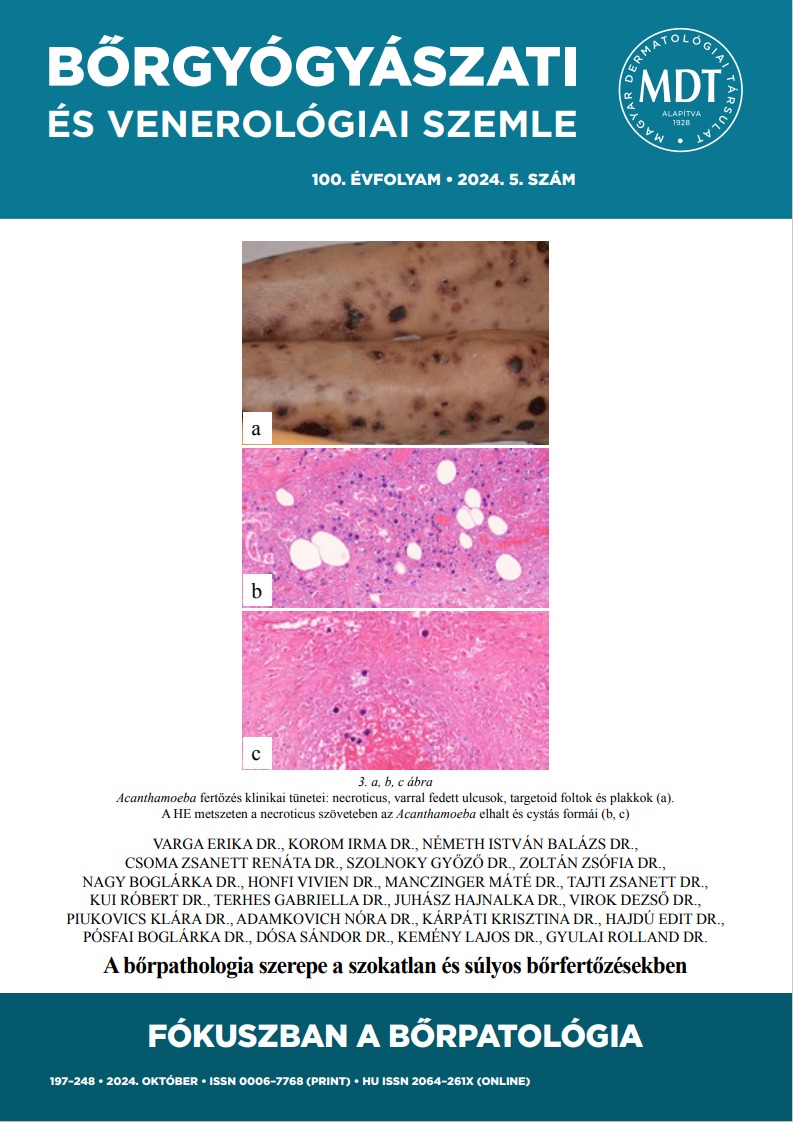What should I call you? Pathology of Spitz tumors
Abstract
There are few areas in dermatopathology more controversial than the assessment of Spitz tumours. This is well reflected by the fact that one of the highest levels of pathological interobserver variability is seen in the evaluation of the Spitz spectrum: Spitz nevus / Spitz melanocytoma (formerly known as atypical Spitz tumours) / Spitz melanoma. The constantly changing nomenclature does not help either, with many people using the terms Spitz melanoma / spitzoid melanoma interchangeably. Over the past decade, the mapping of the genetics of Spitz tumours has provided opportunities for more accurate diagnostics and classification, as well as more precise prognostication. Based on the identified differences, four main genetic subtypes can currently be distinguished: 1 – Spitz tumours with HRAS mutation (potentially accompanied by 11p amplification or 6q23 deletion), 2 – Spitz tumours with tyrosine-kinase fusions (ALK, ROS1, NTRK1-3, MET, RET), 3 – Spitz tumours with serine/threonine-kinase fusions (BRAF, MAP3K8), 4 – Spitz tumours with other rare genetic alterations. Each genetic subtype may have characteristic morphological features that can be observed through careful microscopic examination, allowing for the more targeted indication of detailed genetic tests. Furthermore, the detection of secondary genetic errors in addition to the above-mentioned driver alterations provides guidance in prognostic assessment. Melanocytic tumours with a BRAF mutation (and not the aforementioned fusion!), even with Spitz morphology, are classified among melanomas with poorer prognosis, making the use of the term Spitzoid melanoma only appropriate in this case. In our publication, we provie an overview of the morpho-molecular and clinical characteristics of the different Spitz tumour subtypes and the methods used for accurate diagnosis.




